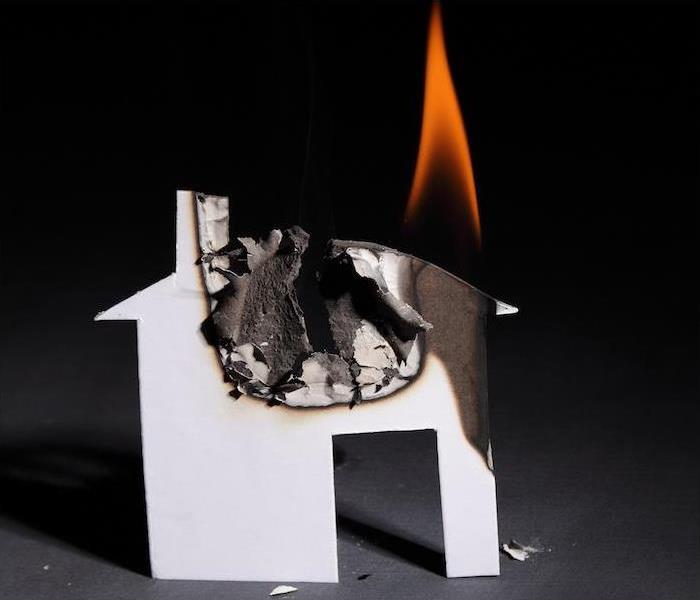Every Fire Has 4 Basic Building Blocks | SERVPRO® of Dublin/Vidalia/Claxton
2/19/2022 (Permalink)
 If your home or business has any damage, SERVPRO of Dublin/Vidalia/Claxton is ready around the clock to help you recover.
If your home or business has any damage, SERVPRO of Dublin/Vidalia/Claxton is ready around the clock to help you recover.
A simple visual aid can be the difference between someone understanding a concept or remaining confused. Fire, for example, is an incredibly complex subject, but a humble geometric shape can be used to help us make sense of its fundamental elements.
Fire agencies refer to it the fire tetrahedron, and it consists of four triangular sides, each of which represent an element that is essential to the life of any fire.
Without any one of these present, a fire can’t live, which also tells us a few things about how we can use these foundational elements against a fire.
Fuel. You want to grow big and strong, don’t you? Then do what Mom said and eat your proteins and veggies. And if any fire wants to grow, it needs to eat, too—but it can eat a lot more things than you can.
Heat. Any flammable material has an ignition point, and this point is reached as the material is heated. If you’ve ever had hot oil catch fire in a cooking pan, you know how quickly this can happen once the proper temperature is reached.
Oxygen. Oxidation is key to the combustion process of a fire, which means the fire has to consume and exhaust the oxygen from the surrounding atmosphere.
Chemical Chain Reaction. All these things not only have to combine at the same time, but they have to keep combining in a chain reaction in order for a fire to live.
Cool it. Get your water bucket ready, because one of the most effective ways to stop a fire is to counteract the heat by cooling the fuel, and getting it back to a state of thermal balance.
Smother it. When you stop, drop and roll to stop a clothing fire, or when you use a fire blanket to stop a sudden, wild flare-up on the grill, you’re taking action to deprive the fire of the oxygen it needs, thus ending the catalytic reaction.
Starve it. A fire that can’t eat can’t live. Removing the fuel source can achieve this end, or it will happen naturally once the fire consumes everything it can.
Interrupt the chain reaction. This is a little more scientific than we’ll get into in-depth, but certain gases are able to counteract the actual chemical reaction that keeps a fire going. These are used in certain fire extinguishers, especially in scenarios in which it’s important for water not to be used, such as when electrical equipment is nearby.
If the fire tetrahedron makes a wreck of your home or business, we’re ready around the clock to help you recover. Contact SERVPRO anytime for fast, thorough cleanup and recovery after a fire.



 24/7 Emergency Service
24/7 Emergency Service